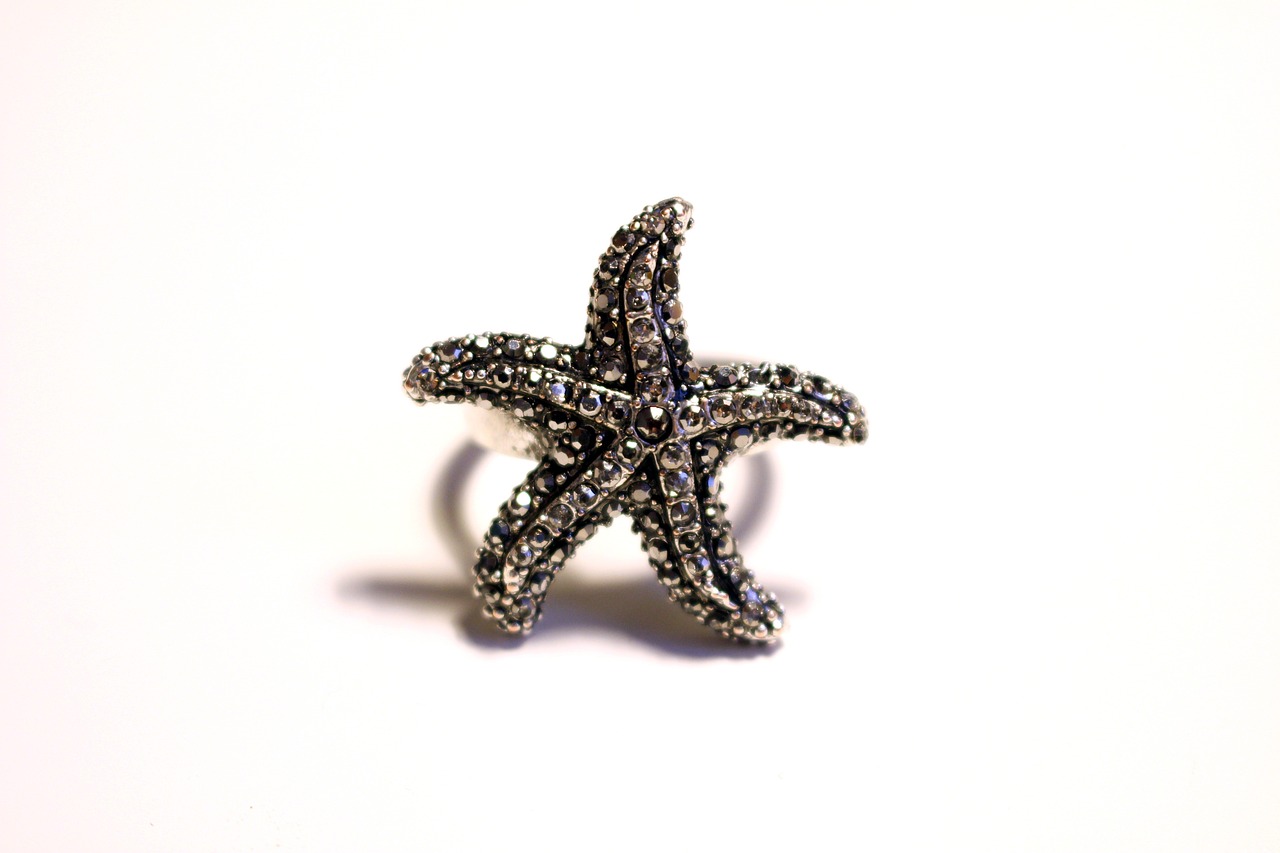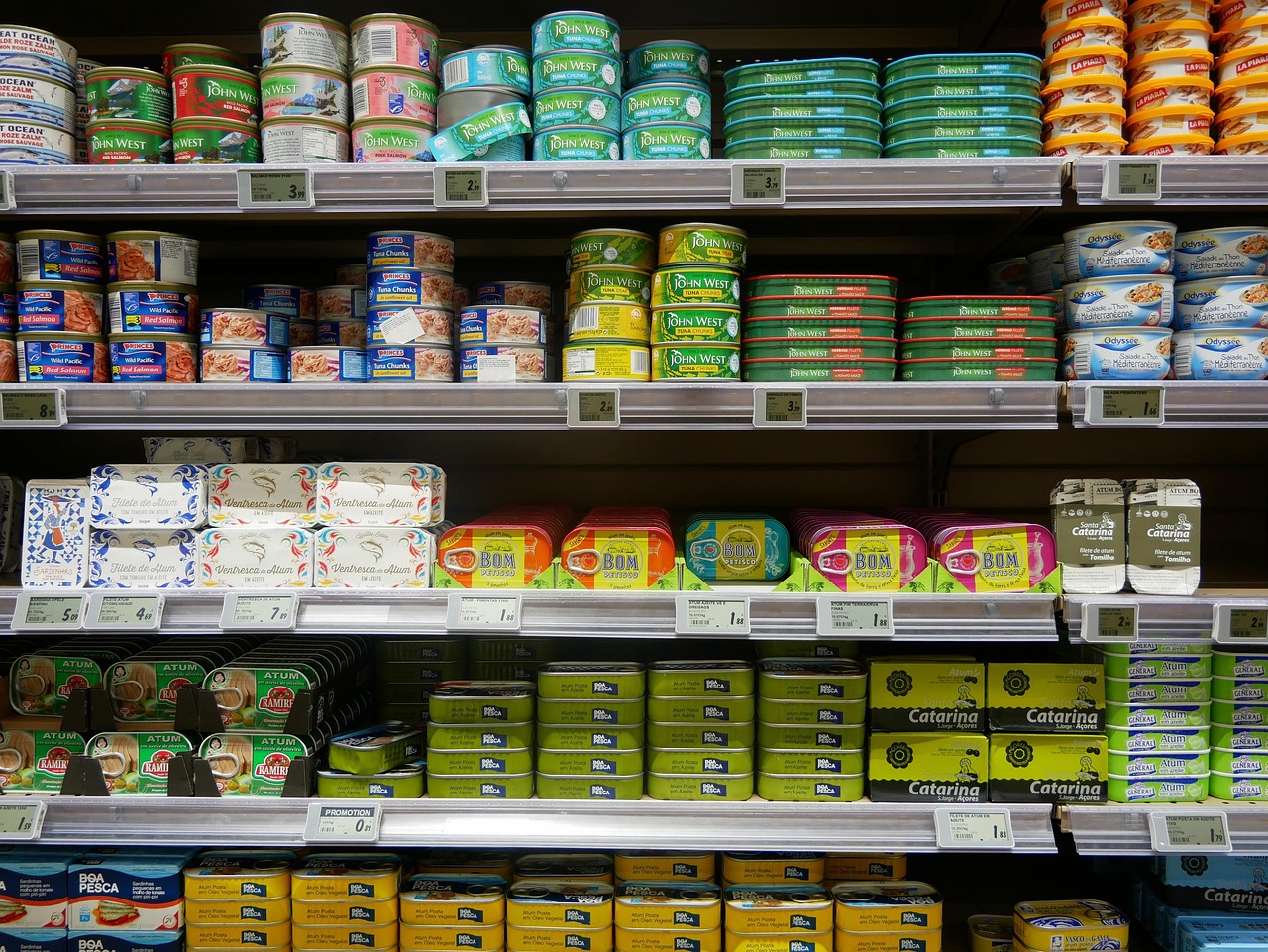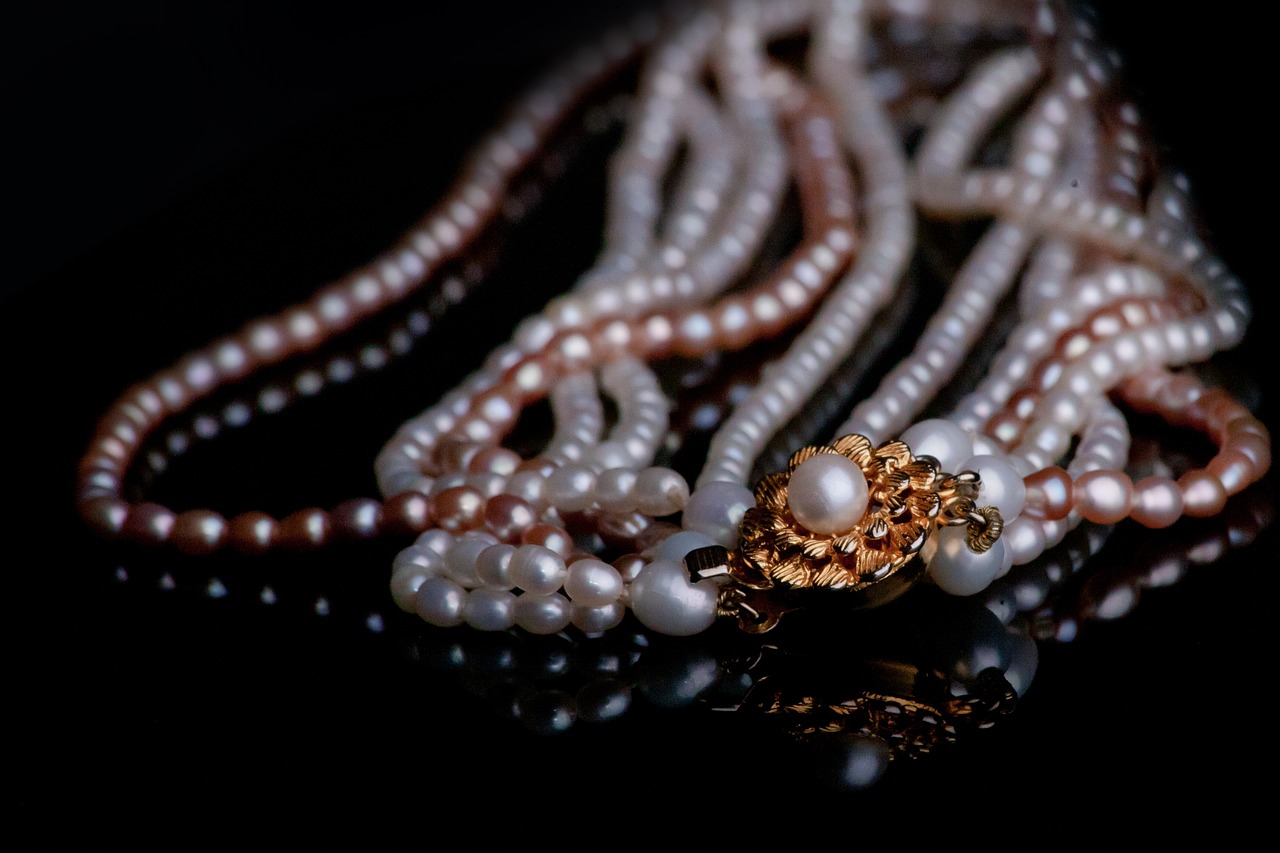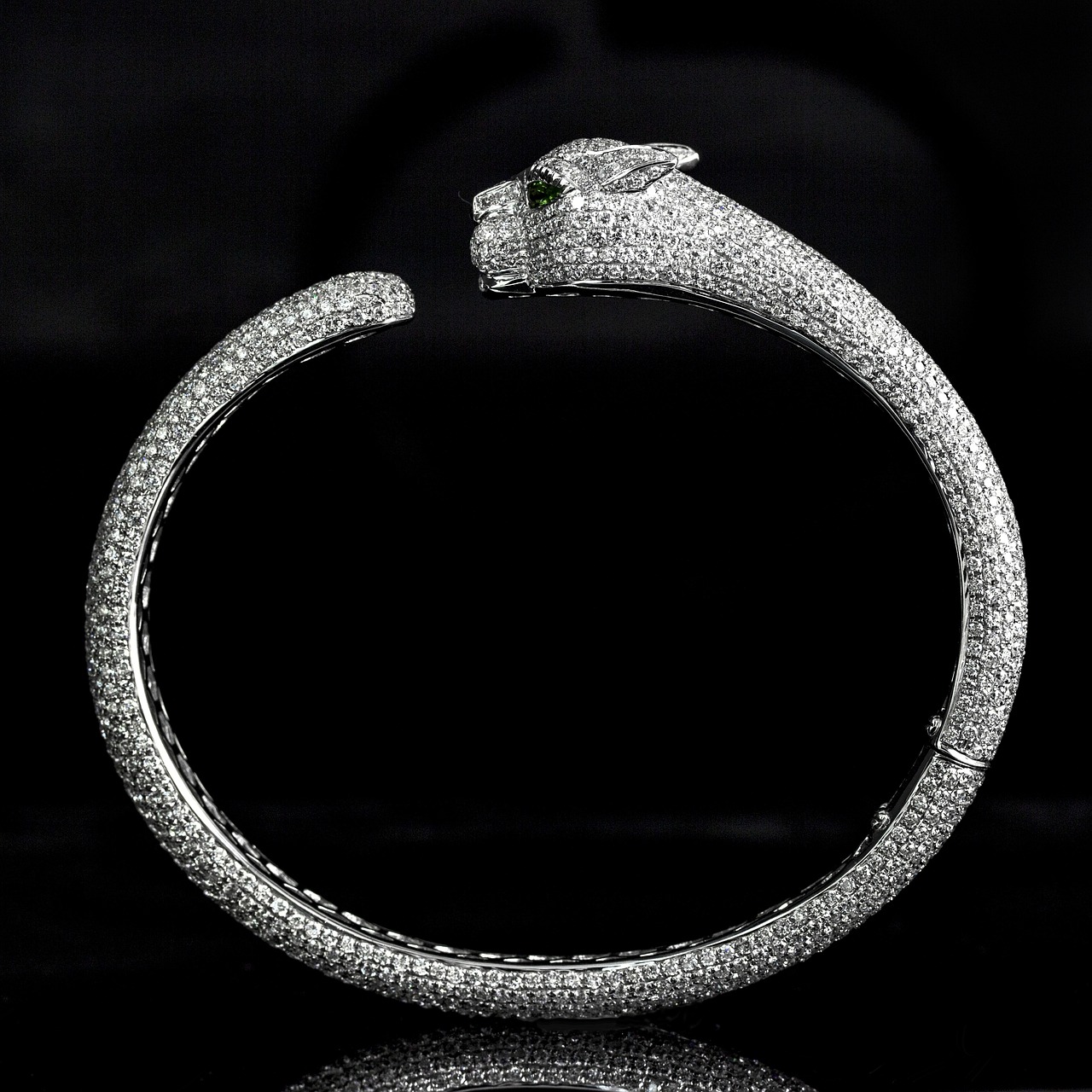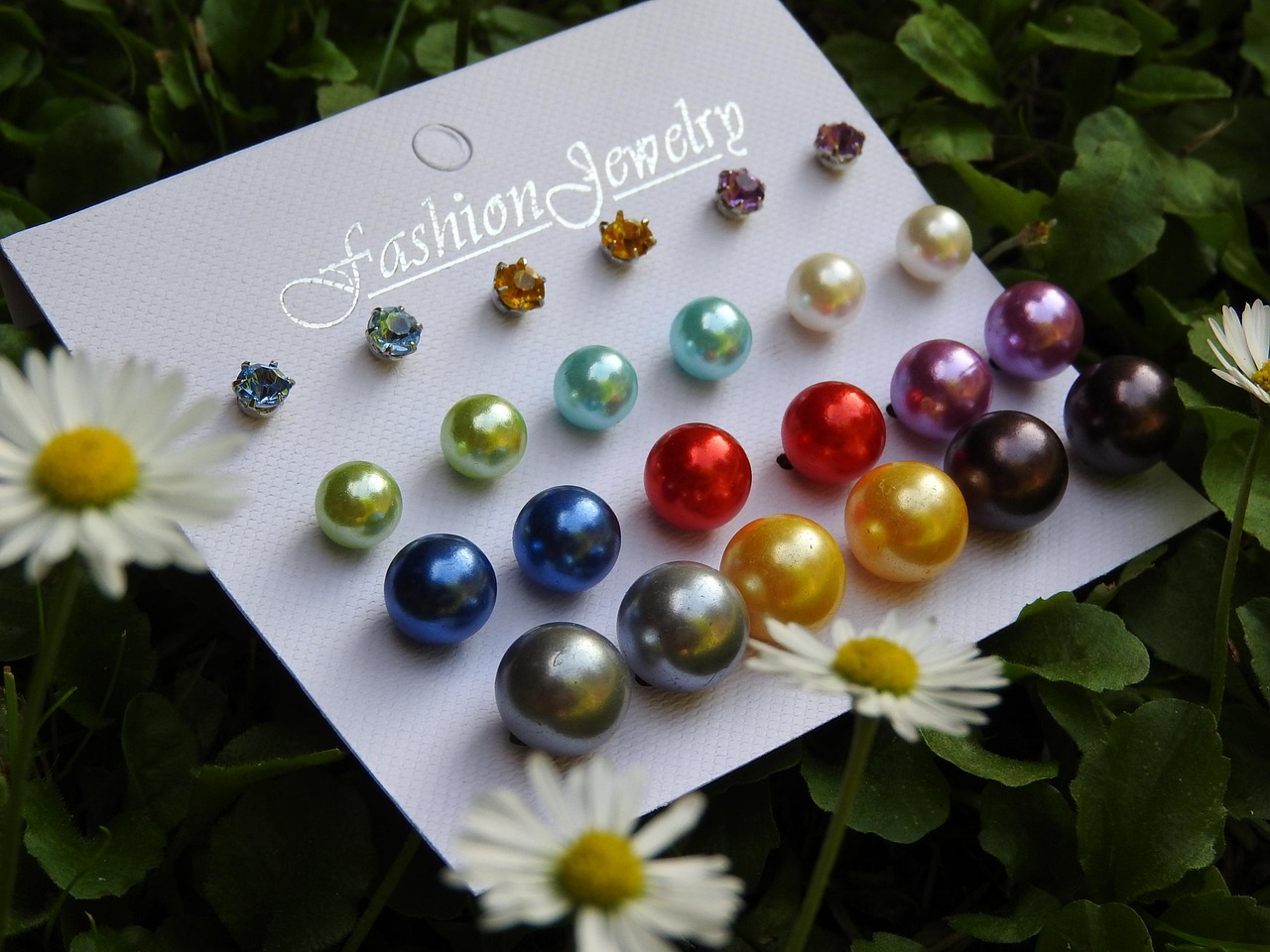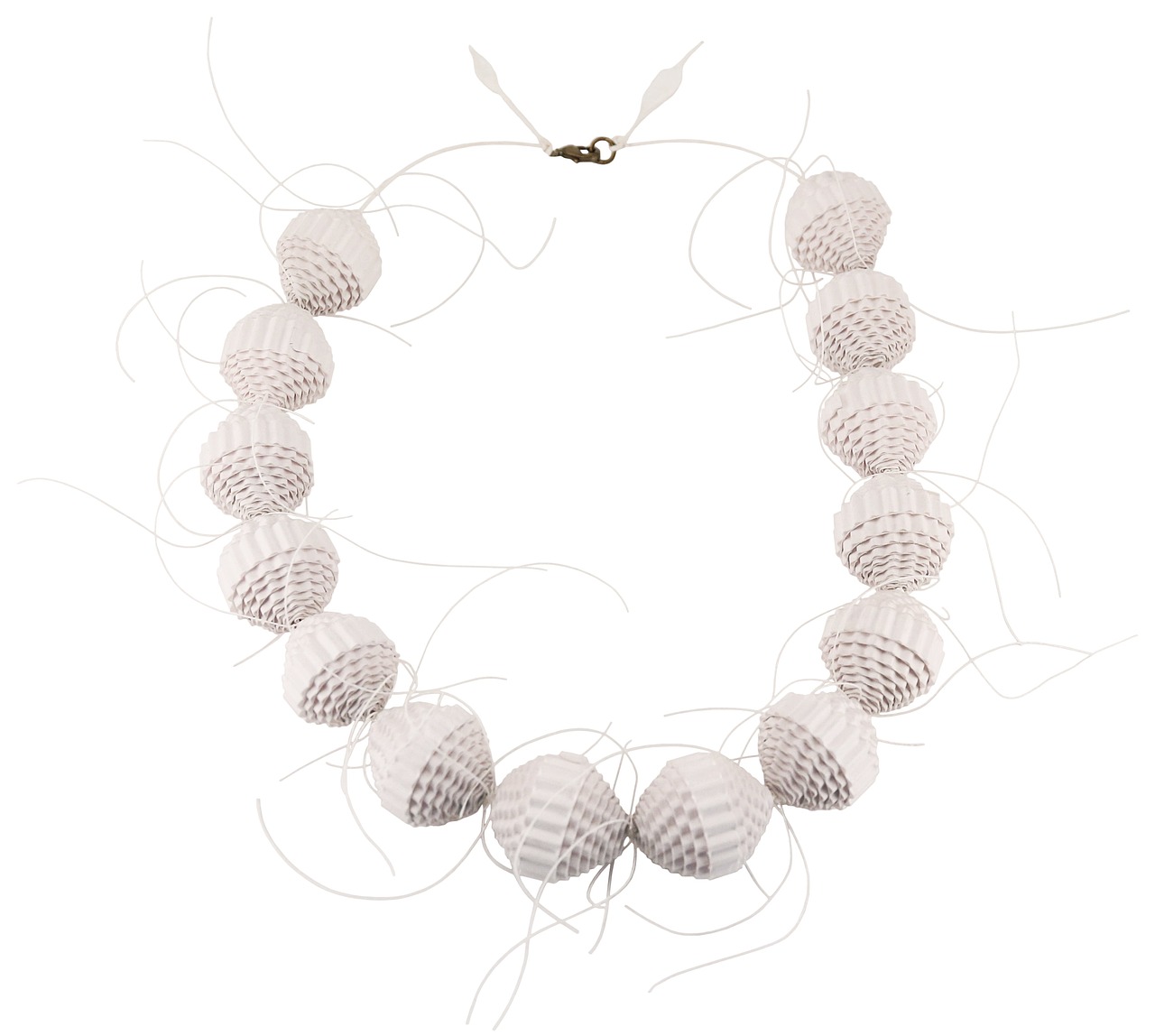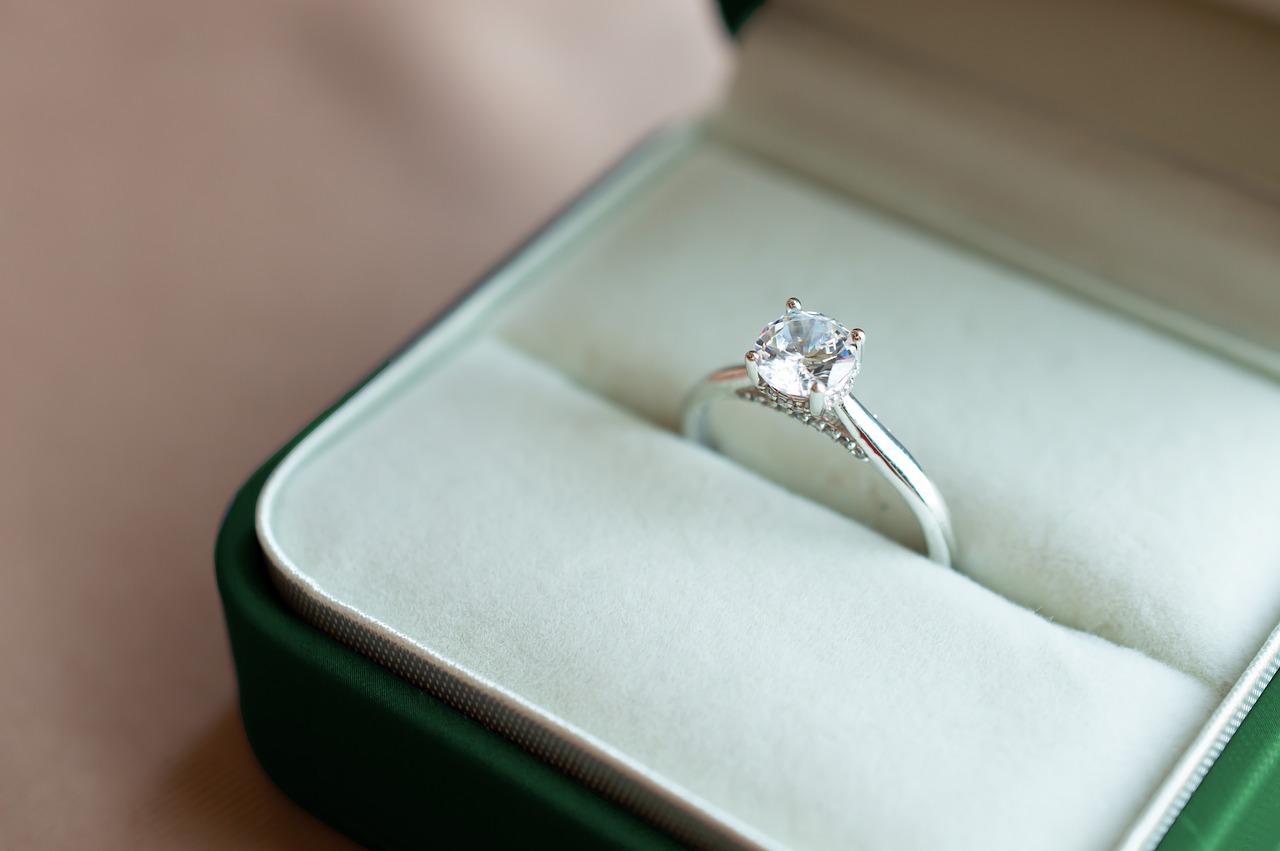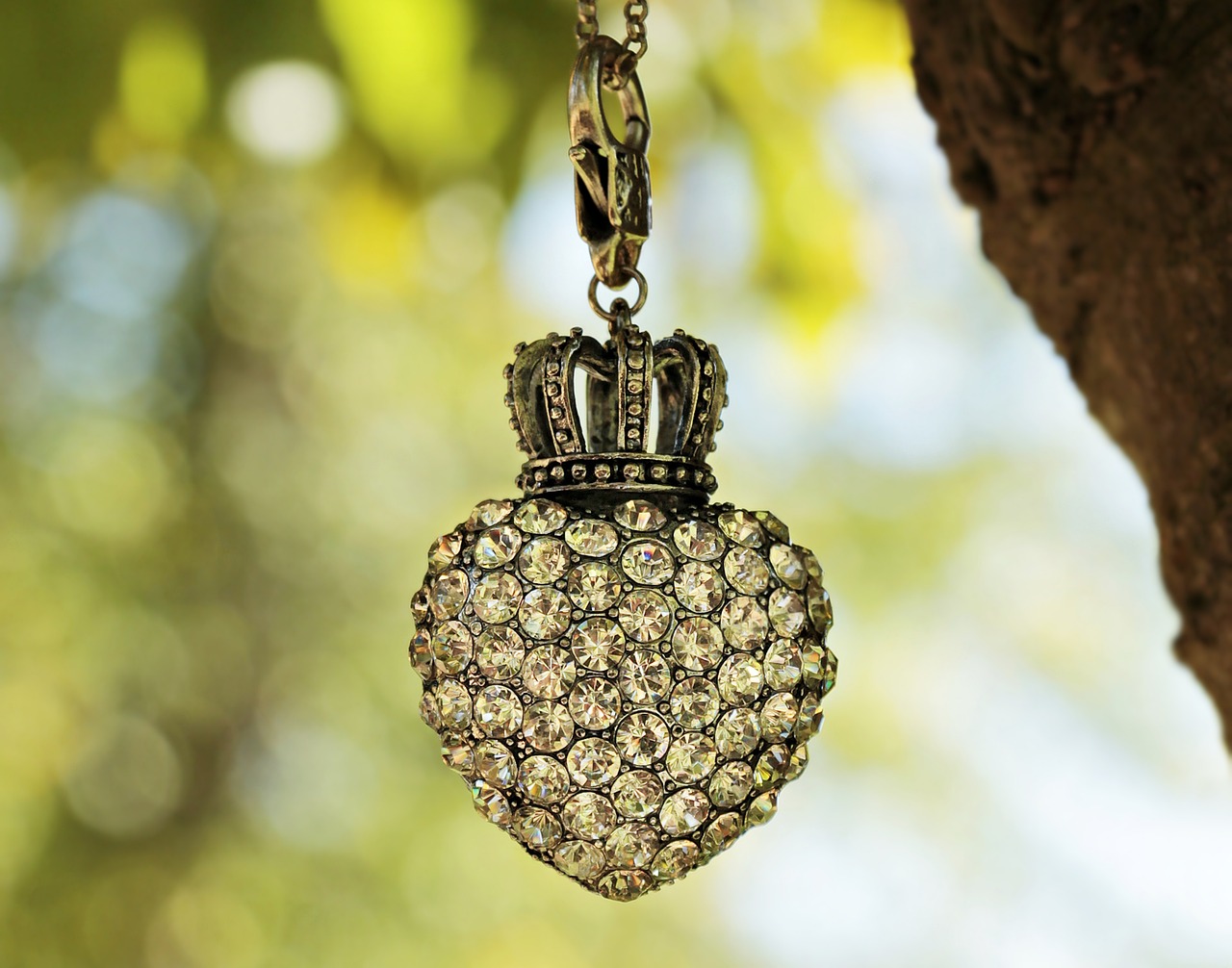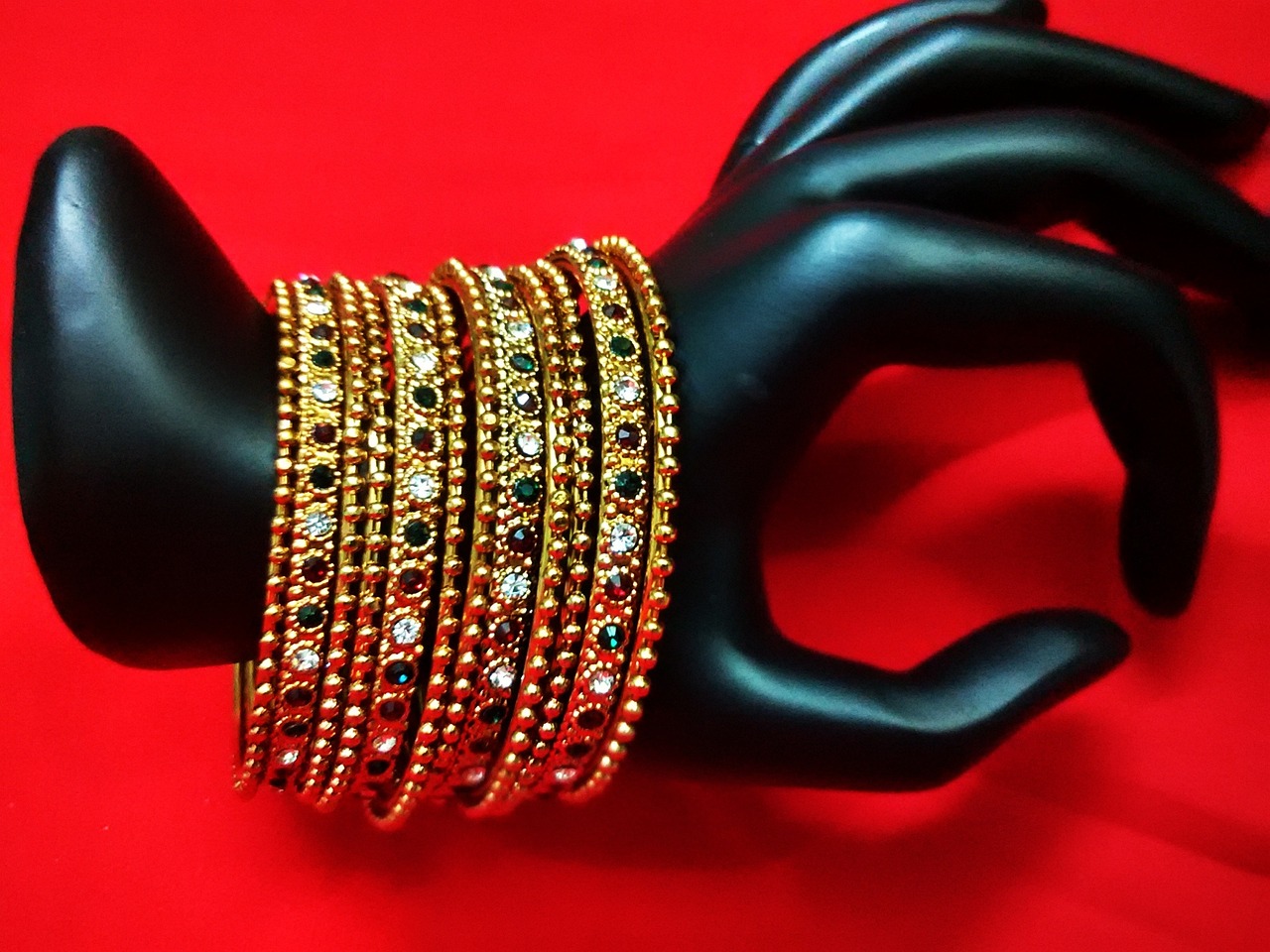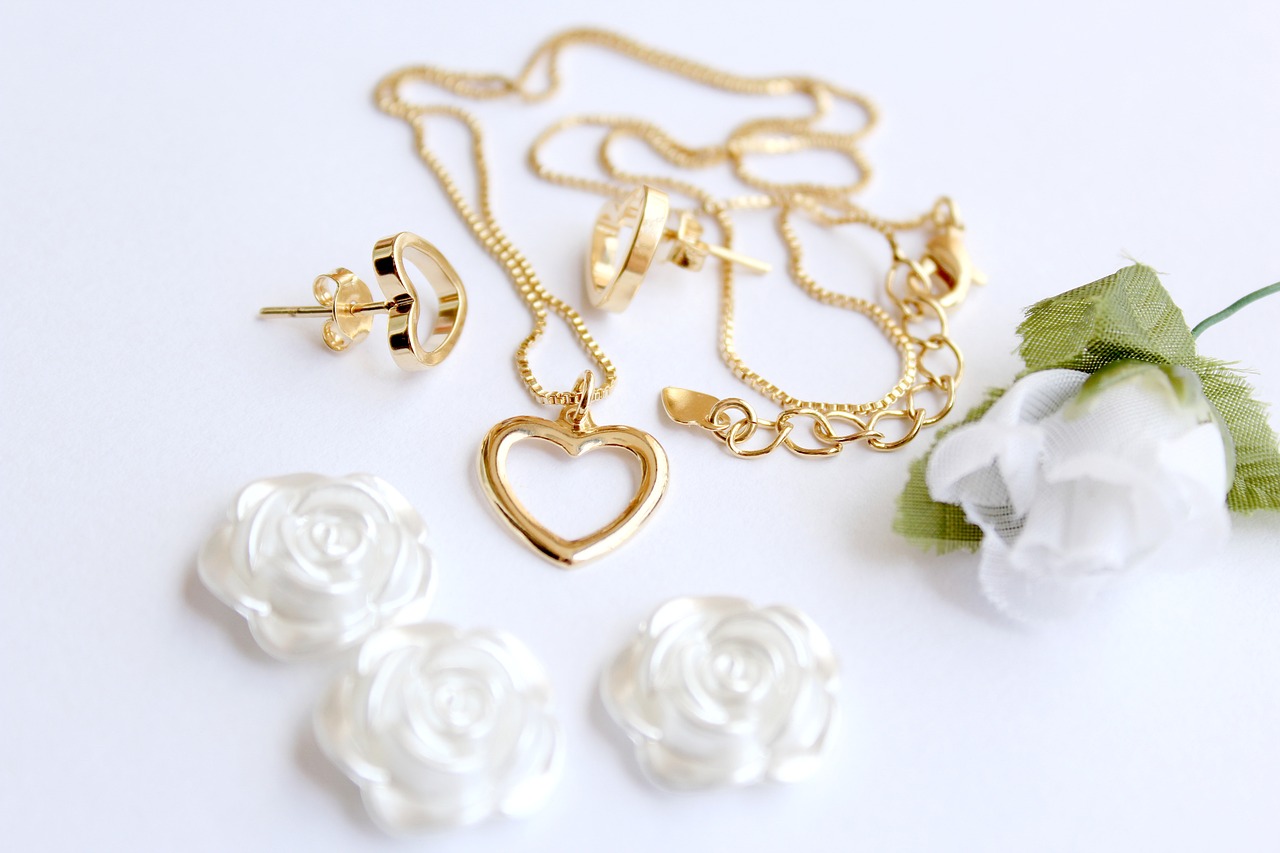This article delves into the significance of jewelry as an heirloom investment, emphasizing its capacity to preserve wealth, emotional value, and cultural heritage across generations. Jewelry is not merely an accessory; it embodies history, sentiment, and potential financial growth.
Jewelry serves as both a personal adornment and a tangible asset, making it a unique investment choice. Unlike many other investments, jewelry can appreciate over time while also holding deep emotional connections. This duality appeals to both collectors and investors who seek to combine beauty with financial security.
The value of fine jewelry is determined by various factors, including materials, craftsmanship, and market demand. Understanding these elements is crucial for making informed investment decisions. Investors should familiarize themselves with the following:
- Materials That Enhance Value: Certain materials, such as gold, platinum, and precious gemstones, significantly influence the overall value of jewelry. Knowledge of these materials can guide investors in selecting pieces that may appreciate over time.
- The Role of Gold in Jewelry Investment: Gold has long been recognized as a stable investment. Its enduring demand and limited supply make it a reliable choice for those looking to pass down wealth through jewelry.
- Gemstones: A Market of Their Own: Gemstones like diamonds, rubies, and sapphires have their own market dynamics. Understanding their rarity and quality can lead to smart investment choices that retain or increase value.
The craftsmanship and design of jewelry pieces can greatly affect their value. Staying informed about current trends and historical significance can enhance investment potential. Investors should look for:
- Unique Designs: One-of-a-kind pieces often command higher prices.
- Artisan Craftsmanship: Handcrafted jewelry typically holds more value than mass-produced items.
Starting a jewelry investment journey requires careful planning and research. Knowing where to buy, what to look for, and how to assess value is vital for success. Here are some practical tips:
- Identifying Reputable Jewelers: Choosing the right jeweler is crucial for making sound investments. Look for established jewelers with a good reputation and transparent practices to ensure authenticity and quality.
- Researching Market Trends: Staying updated on market trends and consumer preferences can help investors make timely decisions. Regularly following jewelry market reports can provide valuable insights.
Proper care and maintenance of jewelry are essential for preserving its value. Understanding how to store and clean pieces can ensure they remain in excellent condition for future heirs. Consider the following:
- Storage Solutions for Heirloom Jewelry: Choosing the right storage solutions is critical for protecting heirloom jewelry from damage. Consider using anti-tarnish pouches or climate-controlled safes for optimal preservation.
- Cleaning and Maintenance Tips: Regular cleaning and maintenance can prevent deterioration and maintain the beauty of jewelry. Learn the best practices for cleaning different materials to ensure longevity.
Beyond financial worth, heirloom jewelry carries significant emotional value. It often embodies family history, traditions, and memories, making it a cherished possession across generations. Each piece of heirloom jewelry can tell a story, connecting family members to their heritage. Sharing these stories can enhance the sentimental value of the pieces.
Investing in jewelry may have tax implications that investors should understand. Knowing how to navigate these regulations can help in maximizing returns on investments. Familiarize yourself with:
- Understanding Capital Gains Tax: When selling jewelry, investors may be subject to capital gains tax. Familiarizing oneself with tax laws can help in planning for potential liabilities.
- Estate Planning Considerations: Including jewelry in estate planning is crucial for ensuring it is passed down according to the owner’s wishes. Proper documentation and appraisal can facilitate smoother transitions.
As the market for jewelry continues to evolve, understanding its potential as an heirloom investment becomes increasingly important. With careful consideration and planning, jewelry can serve as a lasting legacy.
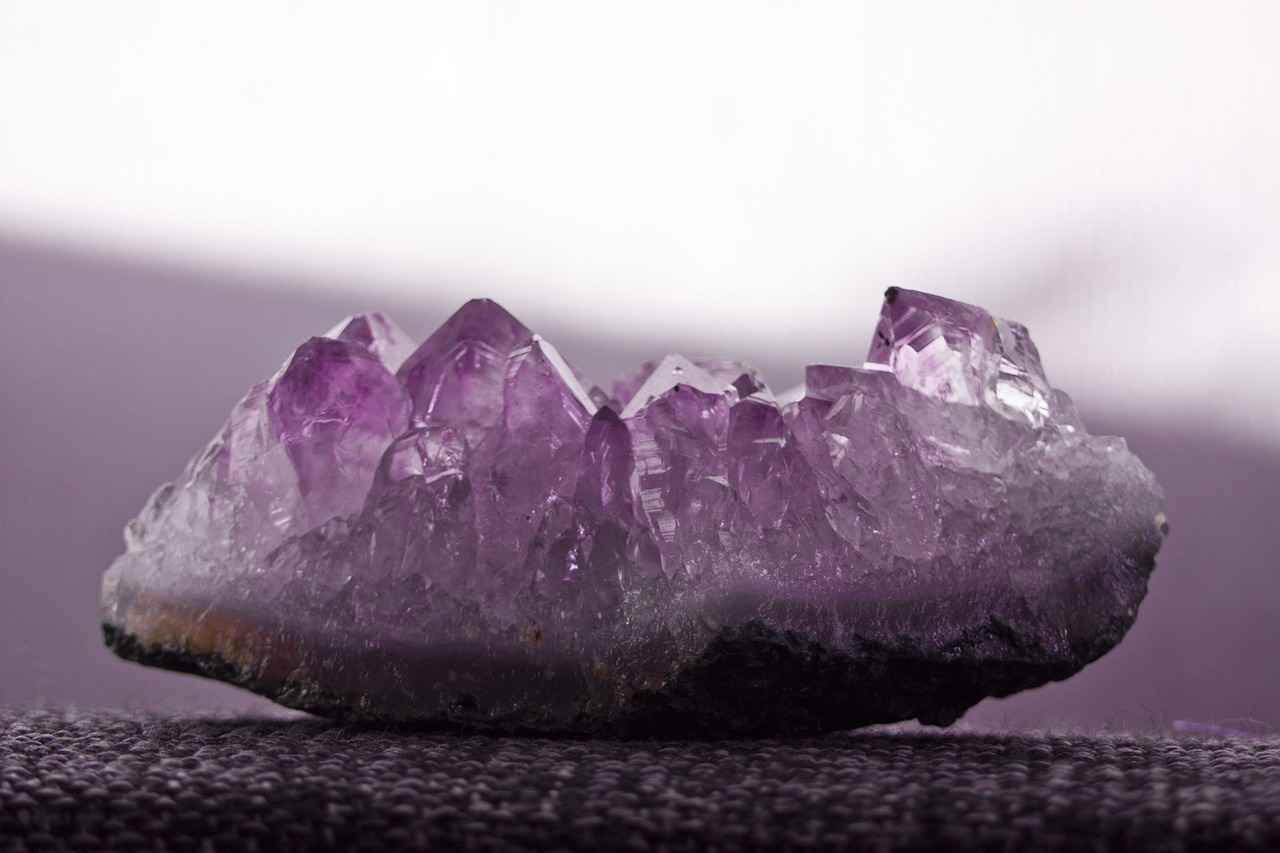
Why Choose Jewelry as an Investment?
Investing in jewelry has become an increasingly popular choice for individuals looking to diversify their portfolios while also enjoying the aesthetic appeal of beautiful pieces. Jewelry serves not only as a personal adornment but also as a tangible asset that can appreciate in value over time. This dual purpose makes it a unique investment choice that appeals to both collectors and investors alike.
Jewelry is more than just an accessory; it represents a blend of artistry, history, and value. The intrinsic worth of fine jewelry can increase, making it a viable option for those looking to preserve and grow their wealth. The emotional connection many have with jewelry also adds to its appeal, as it often carries sentimental value that transcends generations.
The value of fine jewelry is influenced by several key factors, including the quality of materials, the craftsmanship involved, and the current market demand. When considering jewelry as an investment, it’s essential to understand these components. For instance, pieces made from precious metals like gold and platinum, or adorned with gemstones, typically hold higher values due to their rarity and desirability.
- Gold: A long-standing symbol of wealth, gold jewelry has intrinsic value due to its limited supply and enduring demand.
- Platinum: Known for its durability and rarity, platinum jewelry often commands a premium price, making it a wise investment choice.
- Gemstones: Precious stones like diamonds, rubies, and sapphires not only enhance the beauty of jewelry but also contribute significantly to its market value.
The craftsmanship and design of jewelry pieces can greatly affect their value. Well-crafted items from renowned designers or those that showcase unique artistry often appreciate more than mass-produced pieces. Staying informed about current design trends and historical significance can enhance your investment potential.
Beginning your journey in jewelry investment requires careful planning and research. Understanding where to buy, what to look for, and how to assess value is crucial for success. Start by identifying reputable jewelers who have established a solid reputation in the market.
Choosing the right jeweler is essential for making sound investments. Look for established jewelers with a good reputation, transparent practices, and a history of customer satisfaction. This ensures authenticity and quality in your purchases.
Staying updated on market trends and consumer preferences can help investors make timely decisions. Regularly following jewelry market reports and expert analyses can provide valuable insights into which pieces are likely to appreciate in value.
Proper care and maintenance of jewelry are essential for preserving its value. Understanding how to store and clean pieces can ensure they remain in excellent condition for future heirs. Consider using anti-tarnish pouches or climate-controlled safes for optimal preservation.
Beyond financial worth, heirloom jewelry carries significant emotional value. It often embodies family history, traditions, and memories, making it a cherished possession across generations. Each piece can tell a story, connecting family members to their heritage and enhancing the sentimental value of the pieces.
In conclusion, jewelry represents a unique investment opportunity that combines aesthetic appeal with potential financial returns. By understanding the factors that influence value and taking steps to preserve these treasured pieces, investors can create a lasting legacy for future generations.
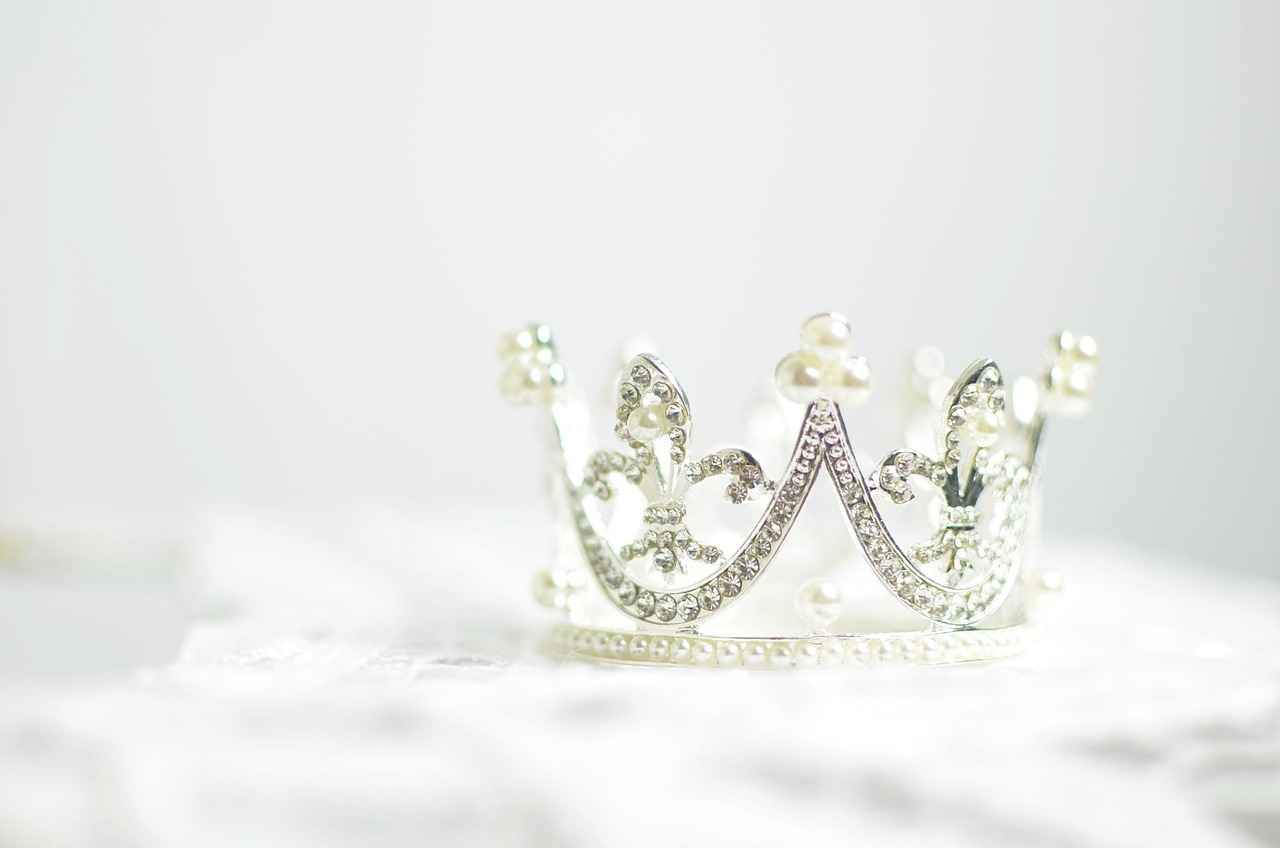
Understanding the Value of Fine Jewelry
Understanding the value of fine jewelry is essential for anyone interested in investing in this timeless asset. Jewelry not only serves as a form of personal expression but also as a potential financial investment that can appreciate over time. Numerous factors contribute to the valuation of fine jewelry, including the choice of materials, the level of craftsmanship, and the dynamics of market demand. By comprehending these elements, investors can make informed decisions that will benefit them in the long run.
The value of fine jewelry is influenced by several key factors, each playing a significant role in determining its market price. Here are the most critical elements:
- Materials: Precious metals like gold and platinum, along with gemstones such as diamonds and sapphires, are fundamental to jewelry’s value. The rarity and quality of these materials can significantly enhance the worth of a piece.
- Craftsmanship: The skill and artistry involved in creating a piece of jewelry can elevate its status. Handcrafted items often fetch higher prices than mass-produced alternatives due to their unique qualities.
- Market Demand: The jewelry market is subject to trends and consumer preferences, which can fluctuate. Understanding these trends can help investors anticipate changes in value.
When considering an investment in jewelry, the materials used are perhaps the most crucial aspect to evaluate. Precious metals, particularly gold, have been a standard for measuring value for centuries. Their durability and intrinsic worth make them a reliable choice for investment. Similarly, gemstones can vary widely in price based on their rarity, clarity, and cut. Knowledge of these factors can guide potential investors toward making wise choices.
Jewelry that showcases exceptional craftsmanship often commands a higher price. Pieces created by renowned designers or artisans are not only aesthetically pleasing but also carry a story and history that can enhance their value. Understanding the nuances of design trends and the significance of craftsmanship can provide investors with valuable insights into their potential purchases.
The jewelry market is dynamic, with demand influenced by various factors such as fashion trends, economic conditions, and cultural significance. For instance, during economic downturns, luxury items may see a decline in demand, while in prosperous times, interest in high-end jewelry often increases. Keeping abreast of these market fluctuations can be crucial for making timely investment decisions.
For those looking to invest in fine jewelry, a strategic approach is essential. Begin by researching reputable jewelers and understanding their offerings. Look for pieces that not only resonate with your personal taste but also possess the potential for appreciation. Investing in quality over quantity is often a sound strategy, as high-quality pieces tend to retain their value better than lower-quality items.
Once you have made a jewelry investment, proper care and maintenance are vital for preserving its value. Regular cleaning and appropriate storage can prevent deterioration. Consider using anti-tarnish pouches and climate-controlled storage solutions to ensure your pieces remain in excellent condition.
Beyond its financial value, jewelry often carries deep emotional and cultural significance. Heirloom pieces can embody family history and traditions, making them cherished possessions that are passed down through generations. This emotional connection can further enhance the overall value of the jewelry.
In conclusion, understanding the value of fine jewelry involves a complex interplay of materials, craftsmanship, and market dynamics. By educating themselves on these factors, investors can make informed decisions that not only enhance their financial portfolio but also connect them to their cultural heritage.
Materials That Enhance Value
When investing in jewelry, understanding the materials that enhance its value is crucial. Certain materials, such as gold, platinum, and various precious gemstones, play a significant role in determining both the aesthetic appeal and the long-term investment potential of jewelry pieces. This knowledge not only guides investors in making informed choices but also helps in recognizing pieces that may appreciate over time.
Gold has long been regarded as a stable investment option. Its intrinsic value is derived from its limited supply and enduring demand across various markets. Unlike other materials, gold does not tarnish or corrode, ensuring that its beauty and value remain intact over time. Investors often seek gold jewelry not just for its beauty but also as a hedge against inflation and economic instability.
Platinum is another highly sought-after material in the jewelry market. Known for its rarity and durability, platinum jewelry is often more expensive than gold. Its weight and hypoallergenic properties make it a desirable choice for those with sensitive skin. Additionally, platinum’s resistance to wear and tarnish adds to its appeal as a long-term investment.
Investing in precious gemstones such as diamonds, rubies, and sapphires can also yield significant returns. The value of these stones is influenced by factors such as color, clarity, cut, and carat weight. For instance, high-quality diamonds with excellent cut and clarity can appreciate significantly over time, making them a popular choice for investors. Understanding the grading systems and market trends for gemstones can provide investors with a competitive edge.
The jewelry market is dynamic, with trends that can affect the value of materials. For example, the increasing popularity of sustainable and ethically sourced materials has driven demand for eco-friendly jewelry. Investors should stay informed about these trends, as they can influence both the desirability and value of specific pieces.
While materials significantly influence jewelry value, the craftsmanship behind each piece cannot be overlooked. High-quality craftsmanship enhances the overall appeal and durability of jewelry. Pieces that showcase exceptional artistry and attention to detail often command higher prices in the market. Investors should look for signs of quality, such as intricate designs and precise settings, which can indicate a piece’s potential for appreciation.
- Research the Market: Stay updated on market trends and consumer preferences to understand how different materials are valued.
- Seek Professional Appraisals: Getting a professional appraisal can provide insights into the current market value of your jewelry.
- Understand Material Characteristics: Familiarize yourself with the properties of various materials to make informed investment choices.
In summary, understanding the materials that enhance the value of jewelry is essential for any investor. By focusing on gold, platinum, and precious gemstones, and considering factors like craftsmanship and market trends, investors can make informed decisions that may lead to significant financial returns. Knowledge of these elements not only aids in selecting pieces that appreciate over time but also ensures that the jewelry remains a cherished heirloom for future generations.
The Role of Gold in Jewelry Investment
has been a topic of interest for both seasoned investors and those new to the world of precious metals. Gold, with its rich history and intrinsic value, has long been considered a stable investment. This article delves into the reasons why gold is a preferred choice for jewelry investment and how it can serve as a means to pass down wealth through generations.
Gold’s status as a reliable asset stems from its enduring demand and limited supply. Unlike paper currencies, which can be printed at will, gold is a finite resource. This scarcity contributes to its value, making it an attractive investment option during economic uncertainty.
The value of gold jewelry is influenced by several factors, including its karat weight, design, and market demand. The karat system measures the purity of gold, with 24k being pure gold. As a result, higher karat jewelry typically commands a higher price. Additionally, unique designs and craftsmanship can add to the overall value of gold pieces.
While gold is a popular choice, other precious metals like platinum and silver also have their merits. Platinum, for instance, is rarer than gold and often more expensive, making it a valuable investment. However, gold’s historical significance and cultural associations often make it the preferred choice for many investors.
Beyond its financial value, gold jewelry often holds sentimental significance. Family heirlooms, such as wedding bands and necklaces passed down through generations, can embody cherished memories and traditions. This emotional connection can enhance the perceived value of gold jewelry, making it a meaningful investment.
- Research Reputable Jewelers: It is crucial to purchase gold jewelry from established and trustworthy jewelers. Look for certifications and reviews to ensure authenticity.
- Assess Market Trends: Keeping an eye on gold prices and market trends can help you make informed decisions about when to buy or sell.
- Consider Unique Pieces: Investing in unique or designer pieces can offer potential for appreciation in value over time.
Proper care and maintenance of gold jewelry are essential to preserve its value. Regular cleaning and safe storage can prevent tarnishing and damage. Consider using anti-tarnish pouches and climate-controlled storage options to protect your investment.
Gold jewelry not only serves as a financial asset but also as a family heirloom. Pieces that have been passed down can carry significant emotional weight, connecting generations and preserving family history. This aspect of gold jewelry investment adds a layer of depth that goes beyond mere financial considerations.
Investors should be aware of potential tax implications when buying or selling gold jewelry. Understanding capital gains tax and how it applies to jewelry can help you navigate the financial landscape effectively.
Gold jewelry remains a timeless investment choice, combining aesthetic beauty with financial stability. Its unique ability to retain value over time, along with its emotional and cultural significance, makes it an exceptional option for those looking to pass down wealth through generations. By understanding the nuances of gold investment, individuals can make informed decisions that benefit their financial future.
Gemstones: A Market of Their Own
Gemstones have captivated humanity for centuries, not only for their beauty but also for their potential as investments. Among the most sought-after gemstones are diamonds, rubies, and sapphires. Each of these stones has distinct market dynamics that can influence their value and desirability.
The value of gemstones is determined by several key factors, including:
- Rarity: The scarcity of a gemstone significantly impacts its price. For instance, high-quality rubies and sapphires are much rarer than diamonds, making them more valuable.
- Quality: This includes the stone’s clarity, color, cut, and carat weight. A well-cut diamond with exceptional clarity and color can fetch a premium price.
- Market Demand: Trends in consumer preferences can shift the demand for specific gemstones, affecting their market value.
Gemstones are graded based on their quality characteristics. The Gemological Institute of America (GIA) provides a widely accepted grading system that helps investors assess the quality of a gemstone. Understanding these grades is crucial for making informed investment decisions.
Diamonds are often seen as a traditional investment. Their value is largely influenced by the Four Cs: cut, color, clarity, and carat weight. Investors should seek diamonds that are certified by reputable gemological laboratories to ensure authenticity and quality. Additionally, the market for diamonds can be quite stable, making them a reliable choice for long-term investment.
Rubies and sapphires are gaining popularity among investors due to their vibrant colors and rarity. The finest rubies, especially those from Myanmar, can command astonishing prices, often exceeding those of diamonds. Sapphires, particularly the Padparadscha variety, are also highly sought after. Understanding the nuances of these gemstones can lead to lucrative investment opportunities.
Investors should keep an eye on market trends and consumer preferences. The popularity of colored gemstones has been on the rise, with many consumers seeking unique, one-of-a-kind pieces. Engaging with reputable jewelers and attending gemstone exhibitions can provide valuable insights into emerging trends.
When purchasing gemstones, it is essential to:
- Research: Familiarize yourself with the market and current trends.
- Consult Experts: Seek advice from gemologists or experienced jewelers.
- Verify Authenticity: Ensure that the gemstones come with certification from recognized institutions.
Proper care and maintenance are crucial for preserving the value of gemstones. Store them in a safe place, away from harsh chemicals and direct sunlight. Regular cleaning, done carefully, can help maintain their brilliance.
Beyond their financial worth, gemstones often carry significant emotional value. They can symbolize milestones, achievements, and family heritage, making them cherished possessions that can be passed down through generations.
Understanding the dynamics of the gemstone market is essential for making informed investment choices. By considering factors such as rarity, quality, and market demand, investors can select pieces that not only retain value but may also appreciate over time. With careful planning and research, gemstones can serve as a valuable addition to any investment portfolio.
Craftsmanship and Design Trends
The world of jewelry is as intricate as the pieces themselves, with craftsmanship and design trends playing pivotal roles in determining the value of various items. Understanding these aspects can significantly enhance your investment potential and ensure you make informed decisions when purchasing jewelry.
The craftsmanship involved in creating jewelry is a testament to the skill and artistry of the jeweler. High-quality craftsmanship not only enhances the aesthetic appeal but also contributes to the durability and longevity of the piece. Jewelry that is meticulously crafted often commands higher prices due to its superior quality and attention to detail.
- Vintage and Antique Styles: Pieces that reflect historical design elements often attract collectors. The nostalgic appeal of vintage jewelry can significantly increase its market value.
- Contemporary Designs: Modern and innovative designs that incorporate unique materials or techniques can captivate today’s consumers, making them highly sought after.
- Customization: Personalized jewelry, such as bespoke pieces, can carry a premium due to their unique nature and emotional significance.
Jewelry pieces that have historical significance or are associated with notable figures can see their value soar. For instance, pieces worn by celebrities or royalty often become iconic and are highly collectible. Understanding the history behind a piece can provide insights into its potential for appreciation over time.
To maximize your investment, it is crucial to stay informed about current trends in the jewelry market. This includes following fashion shows, industry reports, and expert analyses. By being aware of what styles are gaining popularity, you can make better purchasing decisions that align with market demand.
The interplay between craftsmanship and design is essential in determining a piece’s overall value. For example, a well-designed piece that lacks quality craftsmanship may not hold its value as well as a simpler design that is expertly crafted. Therefore, when investing in jewelry, it is vital to assess both elements.
1. Inspect the details: Look for smooth edges, even settings, and secure clasps.2. Check for hallmarks: Authentic pieces often have markings indicating their metal content and the jeweler's brand.3. Research the jeweler: Established jewelers with a good reputation are more likely to produce high-quality work.
In summary, the craftsmanship and design of jewelry pieces are critical factors that influence their value and investment potential. By understanding these elements, staying informed about trends, and evaluating pieces carefully, you can make wise investment choices that not only enhance your collection but also preserve wealth for future generations.

How to Start Your Jewelry Investment Journey
Starting your jewelry investment journey is an exciting venture that requires a blend of knowledge, strategy, and foresight. With the right approach, jewelry can be a lucrative investment, offering both financial returns and emotional significance. This guide will provide you with essential insights on how to embark on this rewarding path.
Understanding the jewelry market is crucial. Research the types of jewelry that appreciate in value, such as vintage pieces, designer items, or those made with rare materials. Familiarize yourself with the factors that contribute to a piece’s worth, including:
- Material Quality: Gold, platinum, and precious stones are key indicators of value.
- Craftsmanship: Well-crafted pieces often command higher prices.
- Market Demand: Trends can affect the desirability of certain styles or materials.
Choosing the right places to purchase jewelry is vital. Consider the following options:
- Reputable Jewelers: Look for established jewelers with a solid reputation. Verify their credentials and customer reviews.
- Auctions: Auction houses often feature rare and valuable pieces. Research auction results to understand market values.
- Online Marketplaces: Platforms like Etsy or eBay can offer unique finds, but ensure you research the seller’s credibility.
Assessing jewelry value involves several steps:
- Get an Appraisal: A professional appraisal provides an expert opinion on the piece’s worth.
- Research Comparable Sales: Look at similar pieces that have sold recently to gauge market value.
- Understand Grading Systems: Familiarize yourself with grading systems for gemstones and metals to make informed decisions.
Like any investment, jewelry carries risks. Factors such as market fluctuations and changing consumer preferences can impact value. It’s essential to:
- Diversify Your Portfolio: Don’t put all your resources into one piece or type of jewelry.
- Stay Informed: Keep up with market trends and news to make educated decisions.
- Consider Insurance: Protect your investment with proper insurance to cover loss or theft.
Proper care and maintenance are crucial for preserving value. Here are some tips:
- Regular Cleaning: Clean your jewelry regularly to maintain its shine and prevent damage.
- Safe Storage: Store pieces in a cool, dry place, ideally in anti-tarnish pouches or a secure jewelry box.
- Professional Maintenance: Have valuable pieces professionally cleaned and checked for wear and tear.
In conclusion, starting your jewelry investment journey requires a blend of research, planning, and care. By understanding the market, assessing value accurately, and maintaining your pieces, you can build a collection that not only serves as a financial asset but also as a cherished legacy.
Identifying Reputable Jewelers
When it comes to investing in jewelry, is a critical step that can significantly influence the quality and value of your purchases. The jewelry market can be overwhelming, filled with options that range from local artisans to large, well-known brands. However, ensuring that you choose a jeweler with a solid reputation is essential for making sound investments.
Choosing the right jeweler is not just about finding beautiful pieces; it’s about ensuring authenticity and quality. A reputable jeweler will provide you with certificates of authenticity for gemstones and precious metals, ensuring that what you’re investing in is genuine. Additionally, established jewelers often have a track record of customer satisfaction, which can give you peace of mind.
- Experience and Longevity: Look for jewelers who have been in business for several years. Their experience often reflects their ability to maintain quality and customer trust.
- Certifications: Reputable jewelers often have certifications from industry organizations, which can indicate their commitment to ethical practices and quality standards.
- Transparent Practices: A trustworthy jeweler should be willing to share information about their sourcing, manufacturing processes, and pricing.
- Customer Reviews: Check online reviews and testimonials. A jeweler with consistent positive feedback is likely to be reliable.
- Return Policy and Warranty: A solid return policy and warranty can be indicators of a jeweler’s confidence in their products.
Before making a purchase, it’s wise to conduct thorough research:
1. Visit the jeweler's website to review their credentials and services.2. Look for professional affiliations, such as membership in the American Gem Society (AGS) or the Gemological Institute of America (GIA).3. Ask for referrals from friends and family who have made similar investments.4. Attend local jewelry shows or exhibitions where you can meet jewelers in person and assess their offerings.
Opting for a jeweler without a solid reputation can lead to various risks:
- Fraudulent Products: You may end up purchasing fake or misrepresented items that lose value over time.
- Poor Quality: Jewelry from unreliable sources may not be crafted to the same standards, leading to quicker wear and tear.
- Limited Support: If issues arise with your purchase, an unestablished jeweler may not offer the necessary support or recourse.
In conclusion, investing in jewelry can be a rewarding experience, but it begins with finding the right jeweler. By prioritizing reputation, transparency, and customer satisfaction, you can confidently make purchases that will not only serve as beautiful adornments but also as valuable investments. Take your time to research, ask questions, and trust your instincts. The right jeweler will not only enhance your investment journey but also provide you with pieces that can be cherished for generations.
Researching Market Trends
In the dynamic world of jewelry investment, staying informed about market trends and consumer preferences is paramount for making timely and profitable decisions. Investors who actively monitor these trends can seize opportunities that may arise, ensuring that their investments not only retain value but also appreciate over time.
Understanding the intricacies of the jewelry market is crucial. Market research provides insights into consumer behavior, emerging trends, and potential shifts in demand. This knowledge equips investors with the tools needed to make informed choices.
- Subscribe to Industry Publications: Renowned jewelry magazines and online platforms often publish market analyses that highlight trends and forecasts.
- Attend Trade Shows: Events like the JCK Las Vegas show or the Hong Kong International Jewelry Show are excellent venues for networking and gaining firsthand insights into market dynamics.
- Engage with Online Communities: Forums and social media groups dedicated to jewelry investment can provide valuable peer insights and experiences.
Consumer preferences in jewelry can shift based on various factors, including fashion trends, economic conditions, and cultural influences. Keeping a pulse on these changes allows investors to adjust their strategies accordingly. For instance, the rising popularity of sustainable and ethically sourced jewelry has reshaped buying patterns, making it essential for investors to consider these factors when selecting pieces.
Economic conditions play a significant role in the jewelry market. During economic booms, luxury items often see increased demand, while recessions may lead consumers to prioritize more affordable options. Investors should be aware of economic indicators, such as consumer confidence indexes, to gauge potential shifts in market demand.
In today’s digital age, technology offers numerous tools for tracking jewelry market trends. Platforms like Google Trends can provide insights into what consumers are searching for, while social media analytics can reveal popular styles and preferences. Utilizing these resources can enhance an investor’s understanding of the market landscape.
Connecting with industry experts and analysts can provide deeper insights into market trends. Many jewelers and investment advisors offer consultations that can help investors navigate the complexities of the jewelry market. Engaging with these professionals can lead to more informed investment decisions.
In conclusion, and consumer preferences is not just a recommendation but a necessity for jewelry investors. By leveraging industry reports, understanding economic influences, and utilizing technology, investors can position themselves for success in the ever-evolving jewelry market. Regularly updating one’s knowledge base ensures that investment decisions are timely and well-informed, ultimately leading to a more prosperous investment journey.
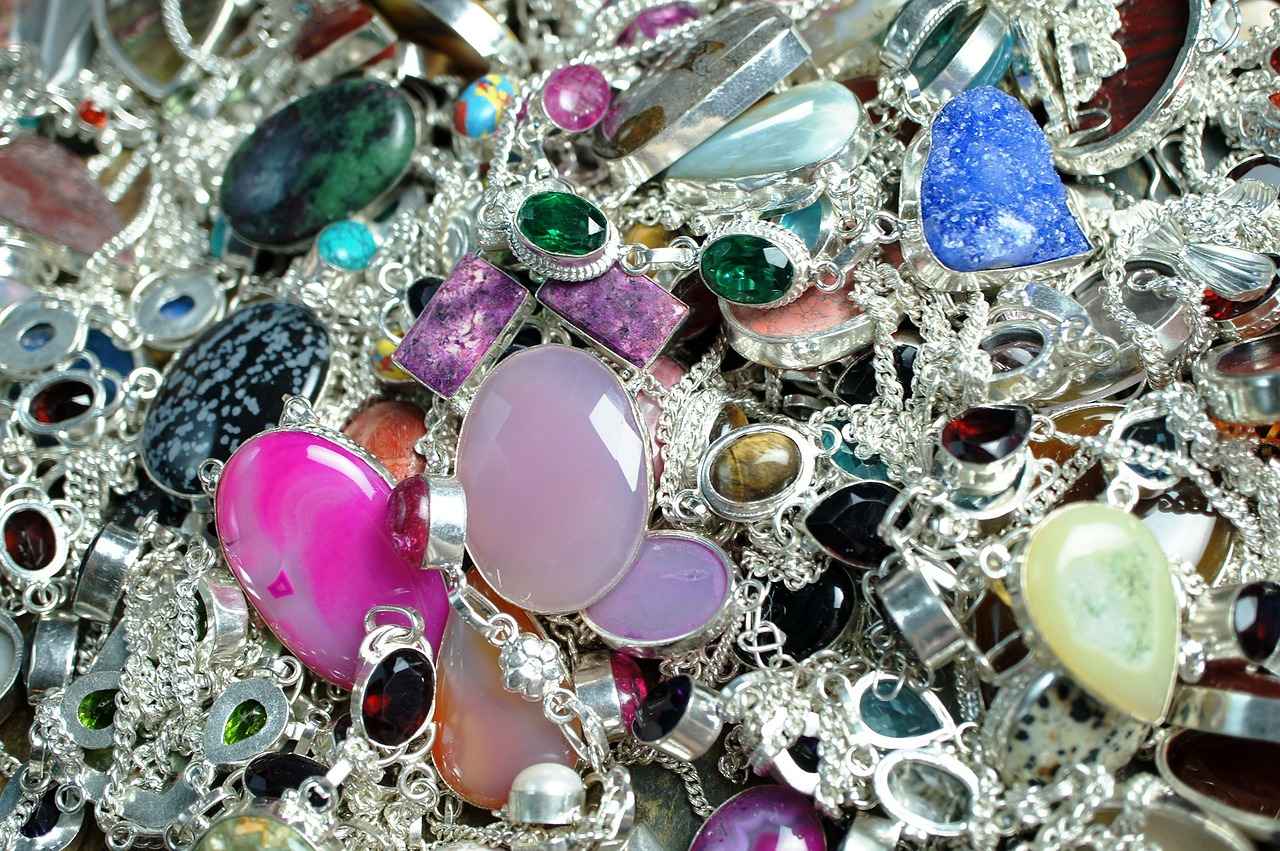
Preserving Jewelry for Future Generations
Jewelry is not merely an accessory; it is often a treasured heirloom that carries both sentimental and monetary value. Proper care and maintenance of jewelry are essential for preserving its value and ensuring that it can be passed down to future generations. This article will explore effective methods for storing and cleaning jewelry, emphasizing the importance of these practices in maintaining the beauty and integrity of each piece.
Jewelry is an investment that can appreciate over time, making its preservation vital. Neglecting to care for jewelry can lead to scratches, tarnishing, and even loss of gemstones. By understanding the best practices for care, you can ensure that your jewelry remains in excellent condition for years to come.
Choosing the right storage solutions is critical for protecting heirloom jewelry. Here are some effective options:
- Anti-Tarnish Pouches: These specialized pouches help prevent tarnishing, especially for silver pieces.
- Jewelry Boxes with Dividers: Using a box with compartments can prevent pieces from scratching against one another.
- Climate-Controlled Safes: For high-value items, a safe that regulates temperature and humidity can provide optimal protection.
Regular cleaning and maintenance can prevent deterioration and keep your jewelry looking its best. Here are some tips:
- Know the Material: Different materials require different cleaning methods. For example, gold can be cleaned with mild soap and water, while pearls should be wiped with a soft cloth.
- Professional Cleanings: Consider having valuable pieces professionally cleaned and inspected at least once a year to ensure they are in good condition.
- Avoid Harsh Chemicals: Stay away from bleach or abrasive cleaners, as they can damage the finish and integrity of your jewelry.
Periodic inspections of your jewelry can help identify any potential issues before they become serious problems. Look for:
- Loose Stones: Regularly check for any stones that may be loose in their settings.
- Worn Settings: Inspect the prongs and settings to ensure they are secure and intact.
- Signs of Wear: Look for scratches or tarnishing that may need immediate attention.
Keeping a detailed inventory of your jewelry can aid in both maintenance and estate planning. Consider documenting the following:
- Description: Include details about each piece, such as materials, size, and any unique features.
- Appraisals: Regular appraisals can help you stay informed about the current market value of your pieces.
- Maintenance Records: Keep track of any cleaning or repairs performed on the jewelry.
In conclusion, the proper care and maintenance of jewelry are crucial for preserving its value and ensuring that it can be cherished by future generations. By implementing effective storage solutions, regular cleaning practices, and thorough documentation, you can protect your investment and maintain the beauty of your heirloom pieces. This not only enhances their monetary value but also preserves the emotional connections tied to them, making them a cherished part of your family’s history.
Storage Solutions for Heirloom Jewelry
When it comes to preserving heirloom jewelry, selecting the appropriate storage solutions is paramount. Heirloom pieces, often passed down through generations, carry not only financial value but also emotional significance. Proper storage can prevent damage and ensure that these treasures remain in pristine condition for future generations.
Jewelry is susceptible to various forms of damage, including tarnishing, scratching, and even loss. Exposure to air, moisture, and light can accelerate deterioration. Therefore, understanding the best practices for storing heirloom jewelry is crucial. Here are some effective storage solutions:
One of the most effective ways to protect silver and other tarnish-prone metals is by using anti-tarnish pouches. These specially designed bags contain materials that absorb moisture and prevent oxidation. Simply place your jewelry inside the pouch, and it will be protected from tarnishing for an extended period.
For those with a more extensive collection, investing in a climate-controlled safe can be a wise choice. These safes maintain a stable temperature and humidity level, protecting jewelry from environmental fluctuations that can cause damage. Ensure the safe is also equipped with a dehumidifier to further reduce moisture levels.
A well-designed jewelry box with dividers can help keep pieces organized and prevent them from scratching each other. Look for boxes lined with soft fabric, such as velvet, to provide additional cushioning. This not only protects the jewelry but also makes it easier to find specific pieces when needed.
- Do not store jewelry in direct sunlight: Exposure to light can fade gemstones and damage certain materials.
- Avoid storing jewelry in damp areas: Bathrooms and basements can increase the risk of tarnishing and mold.
- Keep pieces separated: Storing jewelry together can lead to scratches and tangling.
In addition to proper storage, conducting regular maintenance checks is essential. Inspect your heirloom jewelry for any signs of wear or damage, such as loose stones or broken clasps. Addressing these issues promptly can prevent further deterioration and maintain the value of the pieces.
Consider having your heirloom jewelry professionally cleaned and appraised every few years. This not only helps maintain its appearance but also ensures you are aware of its current market value. A professional can provide insights into any necessary repairs or restoration work that may be needed.
In summary, protecting heirloom jewelry requires thoughtful consideration of storage solutions. By utilizing anti-tarnish pouches, climate-controlled safes, and proper organization methods, you can ensure that these cherished pieces remain in excellent condition. Regular maintenance and professional care further enhance the longevity of your jewelry, allowing you to pass down these valuable heirlooms to future generations with confidence.
Cleaning and Maintenance Tips
Jewelry maintenance is essential not only for aesthetic appeal but also for preserving its value over time. Regular cleaning and care can prevent deterioration and maintain the beauty of your treasured pieces. This section provides comprehensive cleaning and maintenance tips tailored for various materials, ensuring that your jewelry remains in excellent condition for generations to come.
Jewelry can accumulate dirt, oils, and other residues from daily wear, which can dull its shine and lead to long-term damage. Regular cleaning helps to:
- Preserve Shine: Keeping your jewelry clean ensures that it retains its luster and brilliance.
- Prevent Damage: Accumulated grime can cause scratches and tarnishing, especially on softer metals and stones.
- Enhance Longevity: Proper maintenance can significantly extend the life of your jewelry, making it a lasting investment.
Understanding how to clean various materials is crucial for effective maintenance. Here are some tips:
Gold is relatively easy to clean. Here’s how:
1. Mix warm water with a few drops of mild dish soap.2. Soak the jewelry for 15-20 minutes.3. Gently scrub with a soft toothbrush.4. Rinse thoroughly with clean water and dry with a soft cloth.
Silver tarnishes over time, so regular cleaning is essential:
1. Use a silver polishing cloth for light tarnish.2. For heavy tarnish, mix baking soda and water to form a paste.3. Apply the paste gently, then rinse and dry.
Cleaning gemstone jewelry requires caution:
- Soft Stones: For stones like opals and pearls, use a damp cloth to wipe them clean.
- Hard Stones: For diamonds and sapphires, follow the same method as gold jewelry, ensuring to avoid harsh chemicals.
Proper storage is just as important as cleaning. Here are some effective storage tips:
- Individual Pouches: Store each piece in its own pouch to prevent scratches.
- Climate-Controlled Environment: Keep jewelry in a cool, dry place to avoid tarnishing and damage.
- Jewelry Boxes: Use a dedicated jewelry box with compartments to organize and protect pieces.
Consider taking your jewelry to a professional jeweler for deep cleaning and inspection every few years. Professionals can:
- Identify Issues: Spot potential problems that may not be visible to the untrained eye.
- Restore Shine: Use specialized equipment to restore the original shine and finish.
By following these , you can ensure that your jewelry remains beautiful and valuable for years to come. Regular attention to your pieces not only enhances their appearance but also protects your investment, allowing you to pass down these treasures to future generations.
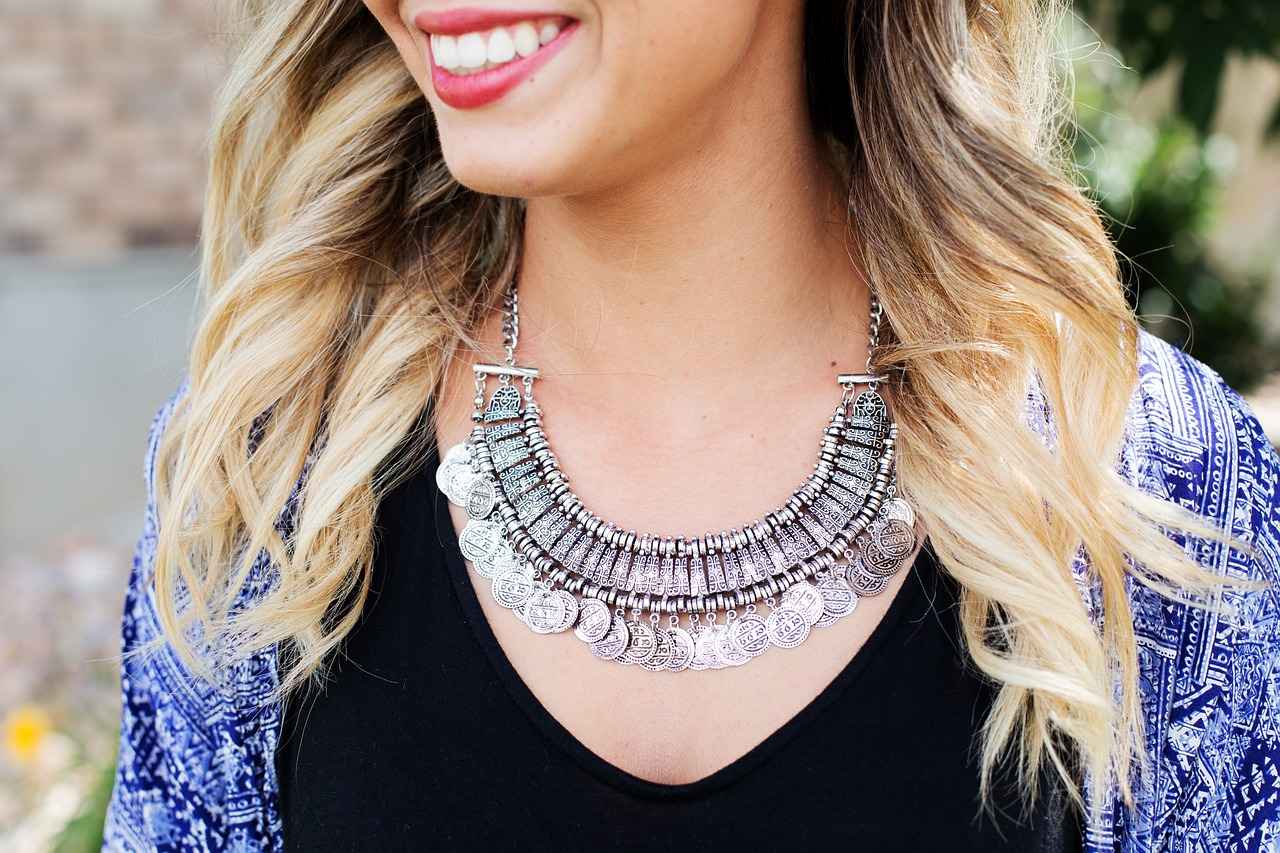
The Emotional Value of Heirloom Jewelry
Heirloom jewelry is not merely a collection of precious stones and metals; it is a treasure trove of family history. Each piece carries with it a unique story, embodying the essence of family traditions, milestones, and cherished memories. This emotional value often surpasses the financial worth of the jewelry itself, making it a significant part of family heritage.
Heirloom jewelry serves as a tangible connection to our past. It acts as a link between generations, allowing family members to feel a sense of belonging and continuity. For many, wearing a piece of heirloom jewelry can evoke memories of loved ones, reminding them of special moments and shared experiences.
Every piece of heirloom jewelry has a story to tell. From a grandmother’s wedding ring to a mother’s pendant, these items often spark conversations about family history. Sharing these stories not only enhances the sentimental value of the jewelry but also strengthens familial bonds. Each time a piece is worn or passed down, the stories attached to it are revived, ensuring that the family legacy continues.
- Special Occasions: Wearing heirloom pieces during significant family events, such as weddings or anniversaries, can create lasting memories.
- Rituals: Establishing traditions around the gifting of jewelry can enhance its emotional significance, making it a rite of passage for younger generations.
- Celebrations: Incorporating heirloom jewelry into holiday celebrations can foster a sense of unity and pride in family heritage.
To maintain the emotional value of heirloom jewelry, proper care and maintenance are essential. Regular cleaning and appropriate storage can protect these treasured items from damage. Understanding how to care for different materials ensures that the jewelry remains in excellent condition for future generations to appreciate.
Heirloom jewelry often plays a vital role in shaping personal identity. Wearing a family heirloom can instill a sense of pride and connection to one’s roots. It serves as a reminder of where we come from and the values that have been passed down through generations. This emotional connection can be particularly profound during significant life events, where the presence of heirloom jewelry can provide comfort and a sense of continuity.
In summary, the emotional value of heirloom jewelry transcends its monetary worth. It encapsulates family history, traditions, and memories, making it a cherished possession that can be passed down through generations. By understanding and appreciating the stories behind these pieces, families can foster a deeper connection to their heritage and create lasting memories that will endure for years to come.
Creating Family Stories Through Jewelry
is more than just a phrase; it embodies the essence of what heirloom jewelry represents. Each piece carries with it a rich tapestry of memories, traditions, and heritage that connects generations. This connection is not merely sentimental; it enhances the intrinsic value of the jewelry, making it a cherished item that transcends time.
When we think about jewelry passed down through family lines, we often envision exquisite rings, necklaces, or bracelets that have adorned our ancestors. However, these items are not just beautiful adornments; they are vessels of family history. Each piece can tell a unique story, from the circumstances of its creation to the moments it has witnessed. For instance, a grandmother’s wedding ring may symbolize enduring love, while a pendant passed from mother to daughter could represent strength and resilience.
Sharing these stories with younger generations can significantly enhance the sentimental value of the pieces. Imagine gathering family members around during a holiday dinner and recounting the tale of a beloved brooch that was worn during a significant family event. Such moments not only bring the family closer but also instill a sense of pride and belonging in younger members.
Moreover, the act of storytelling serves as a bridge between the past and the present. It allows the younger generation to appreciate the cultural significance of the jewelry, fostering a deeper understanding of their heritage. As they learn about the lives of those who wore these pieces before them, they develop a connection that goes beyond the material value of the jewelry.
Incorporating heirloom jewelry into family traditions can further enhance its emotional significance. For example, consider establishing a family custom where certain pieces are worn during special occasions, such as weddings, graduations, or anniversaries. This practice not only honors the past but also creates new memories that intertwine with the stories of the jewelry itself.
Additionally, documenting these stories can be beneficial. Creating a family jewelry journal, where each piece is accompanied by its history, can serve as a valuable resource for future generations. This journal can include photographs, anecdotes, and even appraisals of the jewelry, ensuring that its significance is preserved for years to come.
Furthermore, the emotional connection to heirloom jewelry can also serve as a source of comfort during challenging times. Wearing a piece that belonged to a loved one can evoke feelings of closeness and support, reminding individuals of their roots and the love that has been passed down through generations.
In summary, creating family stories through jewelry is a powerful way to connect with our heritage. It transforms each piece into a living narrative that enriches our lives and strengthens family bonds. By sharing these stories and incorporating jewelry into family traditions, we ensure that our legacies endure, allowing future generations to appreciate not just the jewelry itself, but the rich tapestry of history and love that it represents.
Incorporating Jewelry into Family Traditions
is a beautiful way to enhance familial bonds and create cherished memories that last a lifetime. Jewelry often carries with it a rich history and emotional significance, making it a perfect medium for family storytelling and celebration.
Family traditions play a crucial role in strengthening relationships and providing a sense of belonging. They offer opportunities for family members to connect, share experiences, and pass down values. By incorporating jewelry into these traditions, families can create unique rituals that celebrate their heritage.
Consider special occasions such as weddings, anniversaries, and milestone birthdays as prime opportunities to wear and celebrate heirloom jewelry. These events can be enhanced by the inclusion of meaningful pieces that have been passed down through generations.
- Weddings: Wearing a family heirloom, such as a grandmother’s engagement ring or a mother’s necklace, can add sentimental value to the ceremony.
- Anniversaries: Gifting a piece of jewelry that holds family significance can symbolize enduring love and commitment.
- Birthdays: Celebrating milestones with jewelry that has a story behind it can help younger generations appreciate their family’s history.
Every piece of jewelry has a story to tell. By sharing these stories during family gatherings, members can foster a deeper connection to their roots. For instance, a necklace worn by a matriarch during significant life events can serve as a conversation starter, allowing family members to reflect on the past and envision the future.
Family gatherings provide an excellent platform to showcase heirloom jewelry. Organizing themed events, such as a “family heirloom day,” where members wear and share stories about their pieces, can create a rich tapestry of memories. This not only honors the jewelry but also emphasizes the importance of family history.
Jewelry can serve as a lasting legacy that transcends generations. By intentionally incorporating these pieces into family traditions, families can ensure that the emotional and cultural significance is preserved. Discussing the history and meaning behind each piece can instill pride and respect among younger generations.
To encourage younger family members to appreciate heirloom jewelry, it is essential to involve them in the conversation. Sharing stories about the origins of each piece and its journey through time can spark interest and foster a sense of responsibility in preserving these treasures for the future.
Incorporating jewelry into family traditions not only strengthens bonds but also enriches the family narrative. By celebrating special occasions with heirloom pieces, families can create lasting memories that honor their heritage and instill values in future generations. Jewelry, with its emotional and historical significance, becomes a powerful tool for connection and storytelling.
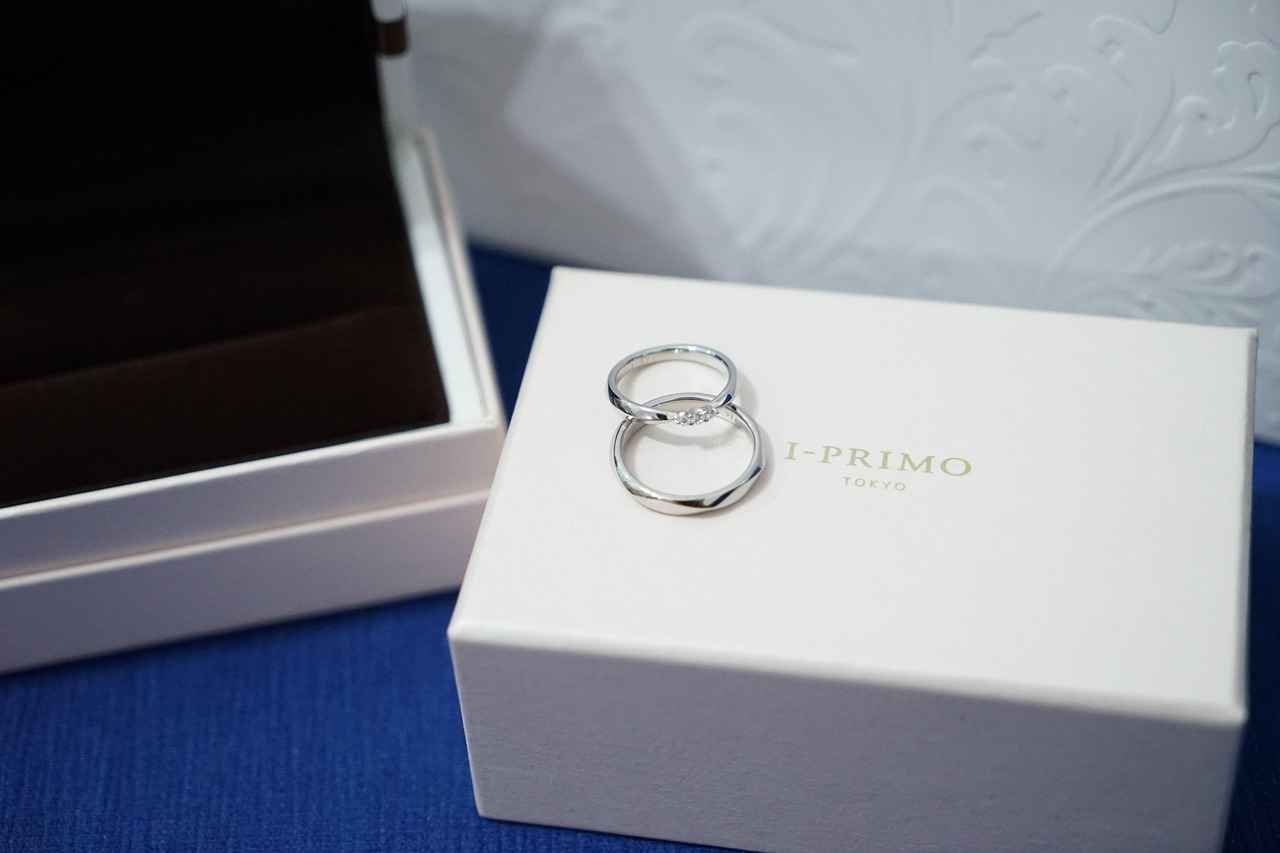
Tax Implications of Jewelry Investments
Investing in jewelry is not just about the beauty and craftsmanship of the pieces; it also involves understanding the tax implications that come with such investments. Jewelry can be a significant asset, and navigating the tax landscape can be complex but essential for maximizing returns. In this section, we will explore the various tax considerations that jewelry investors should keep in mind.
When you decide to sell your jewelry, you may be subject to capital gains tax. This tax applies to the profit you make from the sale, which is calculated as the difference between the selling price and your original purchase price. Understanding how this tax works can help you plan effectively and avoid any surprises during tax season.
The capital gains tax rate can vary based on how long you have held the jewelry. If you sell a piece after owning it for less than a year, you may face a higher short-term capital gains tax rate, which is typically the same as your ordinary income tax rate. Conversely, jewelry held for over a year qualifies for long-term capital gains tax, which is usually lower. Keeping detailed records of your purchases and appraisals can help you accurately calculate your tax obligations.
In some cases, you may be able to exclude certain gains from taxation. For instance, if you sell jewelry as part of a charitable donation, you may not have to pay capital gains tax on the appreciated value of the item. Additionally, if you pass down jewelry as part of an inheritance, the heir may receive a stepped-up basis, which can reduce future capital gains tax liabilities when they decide to sell.
When it comes to estate planning, jewelry can significantly impact the overall value of your estate. If your estate exceeds a certain threshold, it may be subject to estate taxes. Properly documenting the value of your jewelry through professional appraisals can help ensure that your heirs are prepared for any potential tax liabilities. This proactive approach can also facilitate smoother transitions of wealth.
- Keep Detailed Records: Maintain receipts and appraisals to establish a clear history of your jewelry investments.
- Consult a Tax Professional: Engaging with a tax advisor can provide personalized strategies for minimizing your tax burden.
- Consider Charitable Donations: If you have pieces you no longer wish to keep, donating them can provide tax benefits while supporting a worthy cause.
Having your jewelry appraised regularly is crucial, not just for insurance purposes but also for tax implications. An accurate appraisal can help you understand the current market value of your pieces, which is essential when calculating potential capital gains tax. It also aids in estate planning, ensuring that your heirs have a clear understanding of the value they are inheriting.
Understanding the tax implications of jewelry investments is vital for any investor looking to maximize their returns. By navigating the complexities of capital gains tax, estate taxes, and proper documentation, you can ensure that your jewelry not only serves as a beautiful asset but also as a wise investment for the future.
Understanding Capital Gains Tax
When it comes to investing in jewelry, is crucial for any investor. This tax applies when you sell an asset for more than its purchase price, and jewelry is no exception. Familiarizing yourself with the intricacies of tax laws can significantly impact your investment strategy and overall financial planning.
Capital gains tax is a tax on the profit made from selling an asset. In the case of jewelry, if you sell a piece for a higher price than what you originally paid, the profit is considered a capital gain and may be subject to taxation. The rate at which you are taxed can depend on several factors, including how long you held the asset before selling it.
It’s essential to understand the difference between short-term and long-term capital gains. If you hold your jewelry for one year or less before selling, any profits will be taxed at your ordinary income tax rate, which can be significantly higher. In contrast, if you hold the jewelry for more than one year, it qualifies for the long-term capital gains tax rate, which is generally lower.
Calculating your capital gains on jewelry involves a few straightforward steps:
- Determine the basis: This is usually the purchase price of the jewelry plus any associated costs such as appraisal fees or improvements.
- Calculate the selling price: This is the amount you received when selling the jewelry.
- Subtract the basis from the selling price: The result is your capital gain.
Investors can employ several strategies to minimize their capital gains tax liability:
- Hold for the Long Term: As mentioned, holding your jewelry for over a year can reduce your tax rate.
- Utilize Tax-Advantaged Accounts: Consider holding investments in tax-advantaged accounts, if applicable.
- Offset Gains with Losses: If you have other investments that have lost value, selling them in the same year can offset your gains and reduce your tax burden.
Maintaining accurate records is vital for managing your capital gains tax liability. Keep track of:
- Purchase receipts
- Appraisals
- Sales receipts
- Any expenses related to the jewelry
Proper documentation will not only help you calculate your gains more accurately but also provide necessary evidence in case of an audit.
Given the complexities involved in capital gains tax, consulting with a tax professional can be invaluable. They can provide personalized advice based on your financial situation and help you navigate the specific regulations that may apply to jewelry sales in your jurisdiction.
In conclusion, understanding capital gains tax is an essential aspect of jewelry investment. By familiarizing yourself with the tax implications and employing effective strategies, you can maximize your returns and preserve your wealth for future generations.
Estate Planning Considerations
When it comes to estate planning, many individuals often overlook the importance of including jewelry in their plans. Jewelry is not just a collection of adornments; it can represent significant financial value, emotional connections, and a rich family history. Therefore, addressing the role of jewelry in estate planning is vital for ensuring that these cherished items are passed down according to the owner’s wishes.
Including jewelry in your estate plan ensures that your valuable pieces are distributed as you desire. Without proper planning, these items may end up in the hands of those you did not intend to inherit them. This can lead to family disputes and emotional distress. By explicitly stating your wishes, you can help maintain harmony among your heirs.
Proper documentation is essential when it comes to estate planning for jewelry. Here are some steps to consider:
- Inventory Your Collection: Create a detailed list of all your jewelry pieces, including descriptions, photographs, and appraisals.
- Professional Appraisal: Obtain a professional appraisal to determine the current market value of each item. This can help your heirs understand the value and significance of the pieces they inherit.
- Legal Documentation: Include your jewelry inventory in your will or trust documents, specifying who will receive each piece.
Jewelry often carries immense emotional value, representing family traditions, milestones, and cherished memories. By including these pieces in your estate plan, you ensure that the stories and connections associated with them are preserved. Consider sharing the history of each piece with your heirs, as this can enhance its sentimental value.
When planning your estate, it is crucial to consider the tax implications of passing down jewelry. Depending on the value, your heirs may be subject to estate taxes or capital gains taxes when they sell the pieces. Understanding these financial responsibilities can help you and your heirs plan better for the future.
Another important aspect of estate planning is selecting the right executor. This individual will be responsible for ensuring that your wishes regarding your jewelry collection are honored. Choose someone who understands the value of the pieces and can handle potential disputes among heirs with care and sensitivity.
To facilitate a smoother transition of your jewelry collection, consider the following:
- Communicate Your Wishes: Have open discussions with your family about your intentions regarding your jewelry. This can help prevent misunderstandings and disputes.
- Regular Updates: Periodically review and update your estate plan to reflect any changes in your jewelry collection or family dynamics.
- Secure Storage: Ensure that your jewelry is stored safely and securely, making it easier for your executor to manage the collection when the time comes.
In conclusion, incorporating jewelry into your estate planning is not just about the financial aspect; it is also about preserving family heritage and emotional connections. By taking the time to document, appraise, and communicate your wishes, you can ensure that your jewelry collection is passed down according to your desires, maintaining both its value and its significance for future generations.
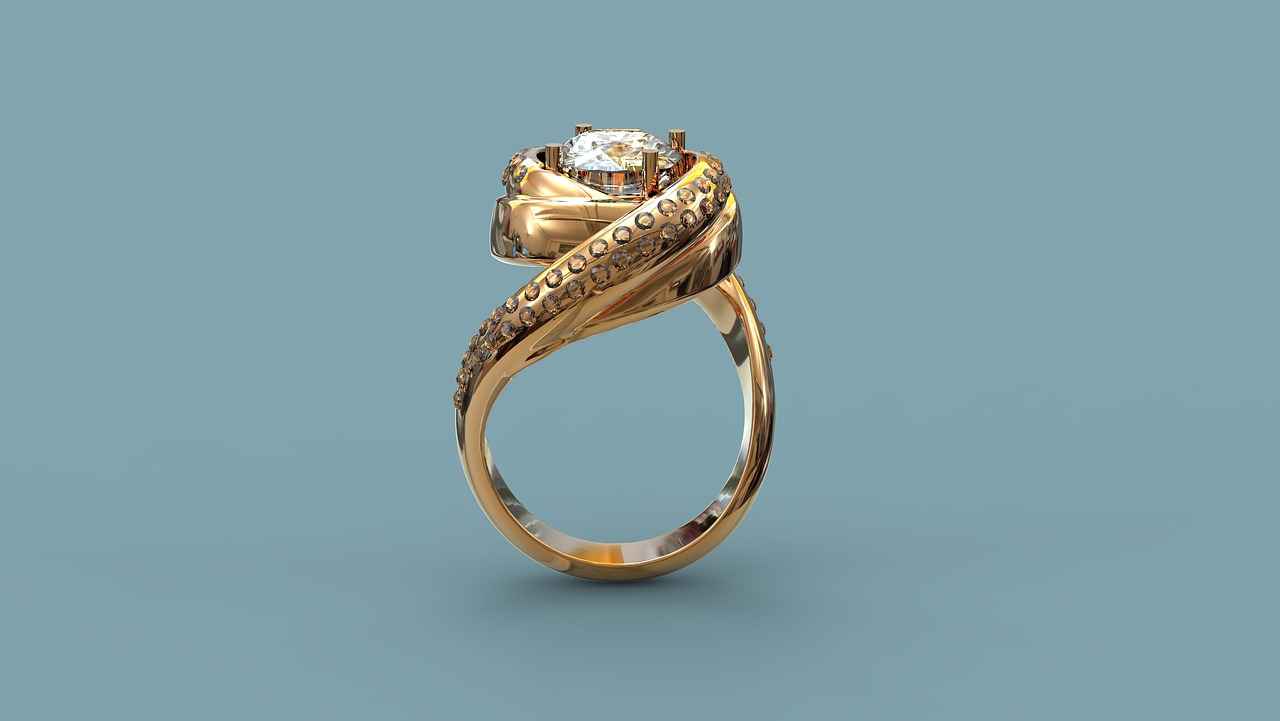
Conclusion: The Future of Jewelry Investments
As the landscape of the jewelry market transforms, it becomes increasingly vital to recognize its potential as a valuable heirloom investment. Jewelry is not merely a decorative accessory; it can also represent a significant financial asset. By understanding the nuances of jewelry investment, individuals can create a lasting legacy that holds both monetary and emotional value.
Jewelry, with its dual role as a personal adornment and an investment vehicle, stands out in the financial landscape. Unlike many other investments that may fluctuate wildly, jewelry often retains its value over time, making it an appealing option for those looking to secure their wealth. The combination of intrinsic value, craftsmanship, and sentimental significance adds layers of appeal for collectors and investors alike.
The value of fine jewelry is influenced by a myriad of factors, including:
- Materials: Precious metals like gold and platinum, as well as gemstones, are crucial in determining worth.
- Craftsmanship: The artistry involved in creating a piece can significantly affect its market value.
- Market Trends: Understanding current trends and consumer preferences can guide investment decisions.
Investors should prioritize jewelry made from materials that have historically appreciated in value. Gold, for instance, is often seen as a stable investment due to its enduring demand and limited supply. Similarly, gemstones like diamonds, rubies, and sapphires have their own unique market dynamics that can lead to substantial returns.
Embarking on a jewelry investment journey requires careful planning and research. Here are essential steps to consider:
- Identify Reputable Jewelers: Seek out established jewelers known for their authenticity and quality.
- Research Market Trends: Stay informed about the latest trends in the jewelry market to make timely investment decisions.
Proper care and maintenance are critical for preserving the value of heirloom jewelry. Here are some practical tips:
- Storage Solutions: Use anti-tarnish pouches and climate-controlled safes to protect pieces from damage.
- Cleaning and Maintenance: Regularly clean jewelry according to material-specific guidelines to maintain its beauty.
Beyond financial implications, heirloom jewelry carries profound emotional significance. It often embodies family history and traditions, creating a bridge between generations. Each piece can tell a story, connecting family members to their heritage and enhancing its sentimental value.
Investing in jewelry can have tax implications that savvy investors should understand. Familiarizing oneself with capital gains tax and estate planning considerations can help in navigating potential liabilities and ensuring a smooth transfer of assets.
As the jewelry market continues to evolve, staying informed and adaptable is key. Investors should regularly review their portfolios, keeping an eye on market trends and personal preferences. By doing so, they can ensure that their jewelry investments remain relevant and valuable over time.
In conclusion, jewelry represents a unique and multifaceted investment opportunity. By understanding its potential as an heirloom investment, individuals can create a lasting legacy that transcends generations, blending financial wisdom with emotional connections.
Frequently Asked Questions
- Why is jewelry considered a good investment?
Jewelry is seen as a great investment because it combines personal significance with tangible value. Over time, well-chosen pieces made from valuable materials can appreciate, making them not just beautiful adornments but also potential financial assets.
- What factors determine the value of fine jewelry?
The value of fine jewelry is influenced by several factors, including the quality of materials (like gold and gemstones), craftsmanship, and market demand. Understanding these elements can help you make informed investment decisions.
- How can I preserve my heirloom jewelry for future generations?
To preserve heirloom jewelry, it’s essential to store it properly—consider using anti-tarnish pouches or climate-controlled safes. Regular cleaning and maintenance also play a crucial role in keeping these treasures in excellent condition.
- What should I know about the tax implications of jewelry investments?
Investing in jewelry may have tax implications, including capital gains tax when selling pieces. It’s important to familiarize yourself with tax laws and consider including jewelry in your estate planning to ensure a smooth transition for future heirs.
- How can I identify reputable jewelers?
Look for established jewelers with good reputations and transparent practices. Reading reviews, asking for certifications, and seeking recommendations can help you find trustworthy sources for your jewelry investments.
